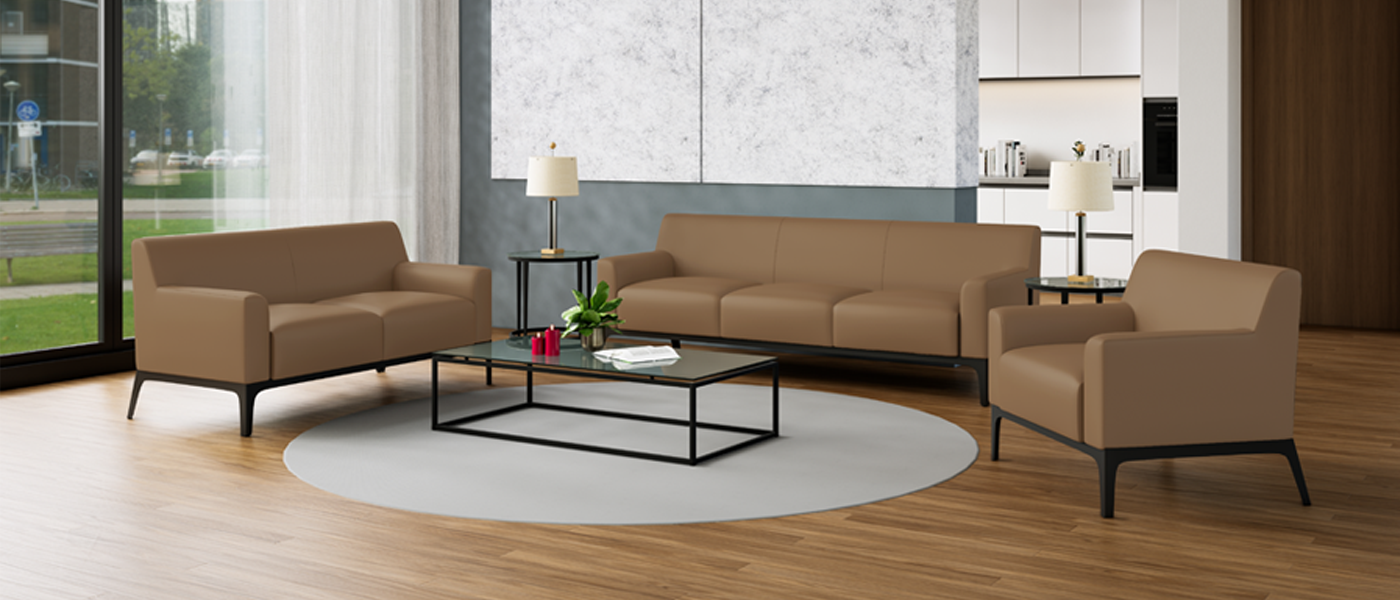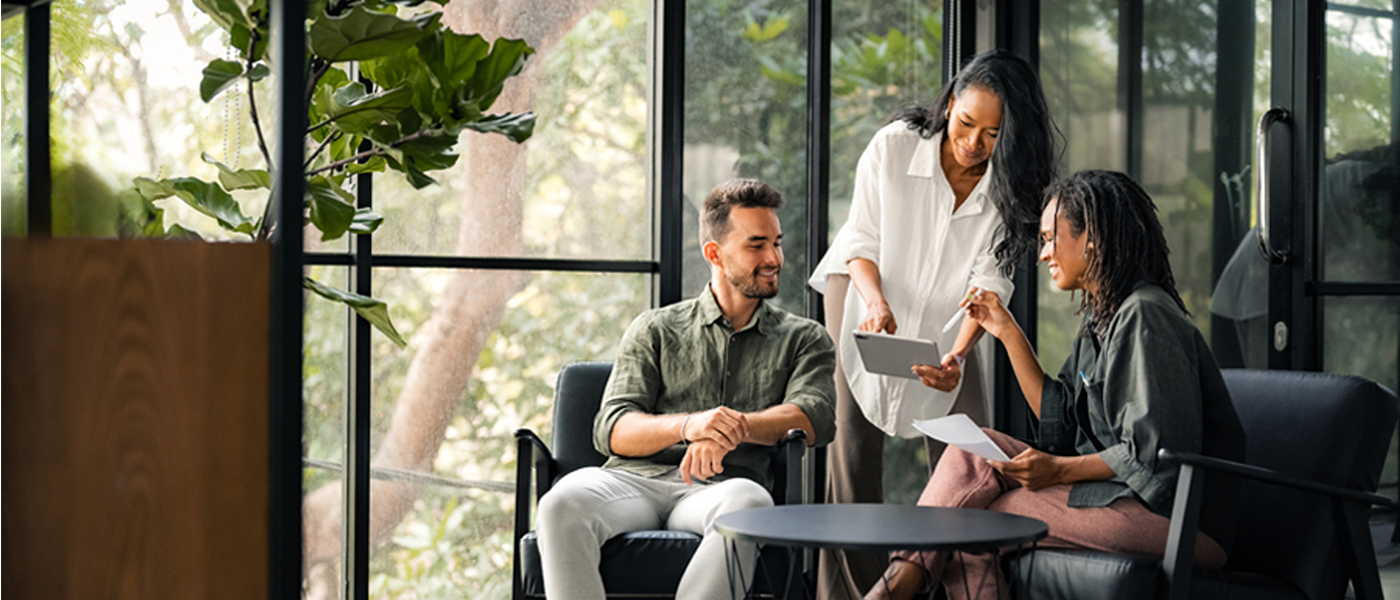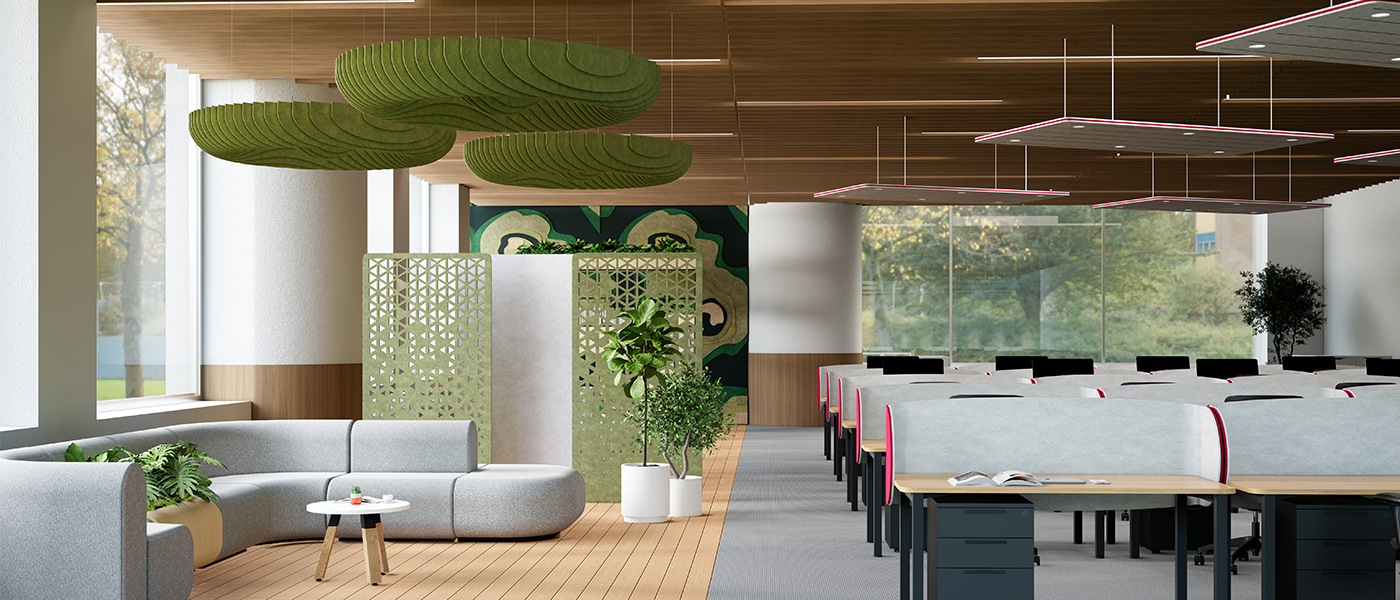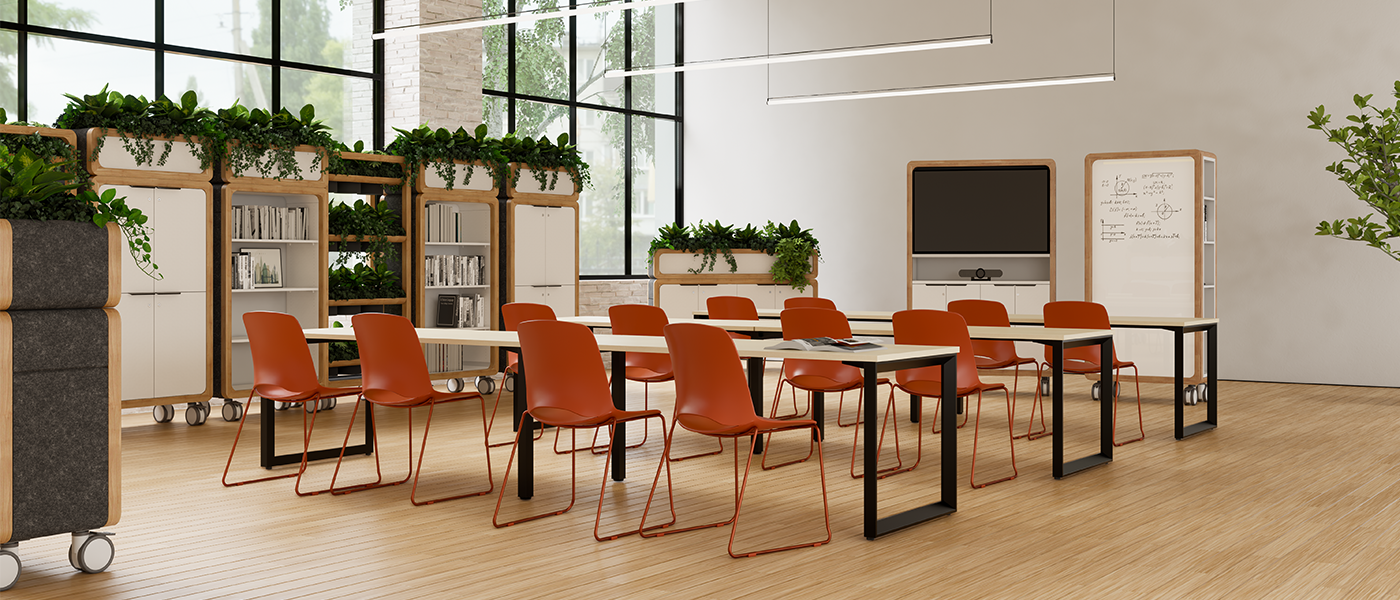Slimline Furniture:
The Quiet Power of Less in the Workplace
written by OLG
In today’s workplace, it’s not always about adding more. Sometimes, the most powerful design decisions come from taking things away. Slimline furniture, characterised by light frames, fine edges, and refined proportions, has become a standout influence in how offices look, feel, and function.
From desks with slimline frames to lounge chairs with delicate bases, slimline design is reshaping workplaces to be calmer, and more spacious. It’s a design movement that proves less can truly deliver more.
Making space feel bigger
One of the biggest benefits of slimline furniture is the illusion of space. By removing heavy underframes, thick tabletops, and bulky storage, the space appears more open and allows flow more freely.
Think of a meeting table: a traditional solid base can dominate a room, while a slimline frame makes the same space feel lighter and more generous. The footprint is the same, but the experience is completely different.
For offices under pressure to do more with less square metreage, slimline solutions give that extra sense of breathing room.
Calm by design
Workplaces can often feel visually noisy, screens, cables, files, all competing for attention. Slimline furniture tones down the clutter. Thin legs, minimal silhouettes, and clean lines help the eye rest, creating a sense of order and calm.
In a workplace context, this translates to furniture that doesn’t shout for attention but quietly supports productivity and focus.
Comfort in a lighter frame
Slim doesn’t mean uncomfortable. Advances in materials and ergonomics mean even the lightest-looking pieces can deliver surprising support.
Lounge chairs with fine steel bases still offer generous cushions, while slimline sofas achieve the perfect balance between elegant silhouettes and everyday comfort. Meeting tables with slender tops and rounded edges reduce arm pressure, while refined underframes provide more legroom.
The result is furniture that is aesthetic and functional, without the heaviness of traditional office pieces.
Tech-friendly without the clutter
Today’s offices run on technology, but nobody wants desks tangled with cords or meeting tables covered in devices. Slimline furniture cleverly integrates these needs.
Micro cable trays disappear under desktops. Slimline meeting tables conceal power modules in neat, low-profile boxes. Even height-adjustable desks have evolved, with slimmer actuators and sleeker bases that keep mechanics in the background.
Paired with slimline linear lighting above, workstations feel effortlessly modern and functional.
Sustainable by nature
There’s a sustainable advantage to using less material. Slimline furniture, by design, often consumes fewer resources, uses recycled cores and lightweight metals, and results in a smaller carbon footprint. In short, slimline design is not only timeless but also aligned with the circular economy.
As Dieter Rams once said, “good design is as little design as possible.” For the workplace, this means furniture that lasts, adapts, and avoids unnecessary bulk.
A new visual language for brands
Slimline design isn’t just about efficiency; it’s also about identity. For organisations, slimline furniture communicates modernity, confidence, and precision. Clean lines and fine details can be customised with finishes that align with brand personality: a black frame paired with an oak top, or a powder-coated slim base in a signature colour.
These small but intentional choices build a cohesive brand presence across offices, meeting rooms, and social spaces.
Where to start; slimline essentials for the workplace
- Workstations & desking: thin profiles, slim frames, integrated power.
- Meeting tables: fine underframes, rounded edges, tech integration.
- Lounge seating: light bases with layered cushioning for comfort.
- Storage: narrow credenzas, wall-mounted shelves, and lockers that don’t dominate.
- Accessories: linear lighting, refined tables, and slim shelving to complete the look.
Slimline furniture is more than a trend, it’s a design language that reflects the modern workplace: agile, people-focused, and sustainable. By reducing bulk and focusing on what matters, slimline pieces help workplaces feel more open, calm, and contemporary.
Sometimes, less really is more, especially when it comes to where and how we work.
Click to download a printable PDF.




